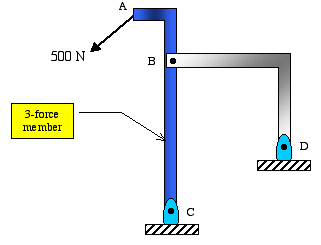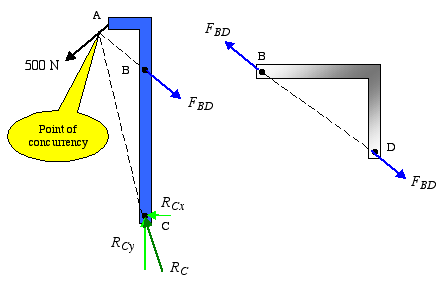Example 4: Draw the free-body diagram of member ABC.

Example 4: Draw the free-body diagram of member ABC.

Draw FBD of ABC: Member ABC is supported by a smooth pin at A, and is connected to member BD by a pin connection at B. Since BD is a two-force member, we know that the direction of force at B must be along a straight line connecting point B to D. Considering the external force, the force at B and resultant reaction at C, we recognize that member ABC is in fact a three-force member. Knowing the direction of the external force and the direction of force at B, we find the point at which they intersect. That point of concurrency is also the point through which the line of action of the reaction resultant force at C must pass through. In this example, we are not showing the dimensions of individual members, and we cannot show the exact location of the point of concurrency, but it is clear that it has to be somewhere along the line of action of the external force.
It is important to note that unlike the case of two-force members, we would still be able to solve such a problem even if we did not see ABC as a three-force member.
